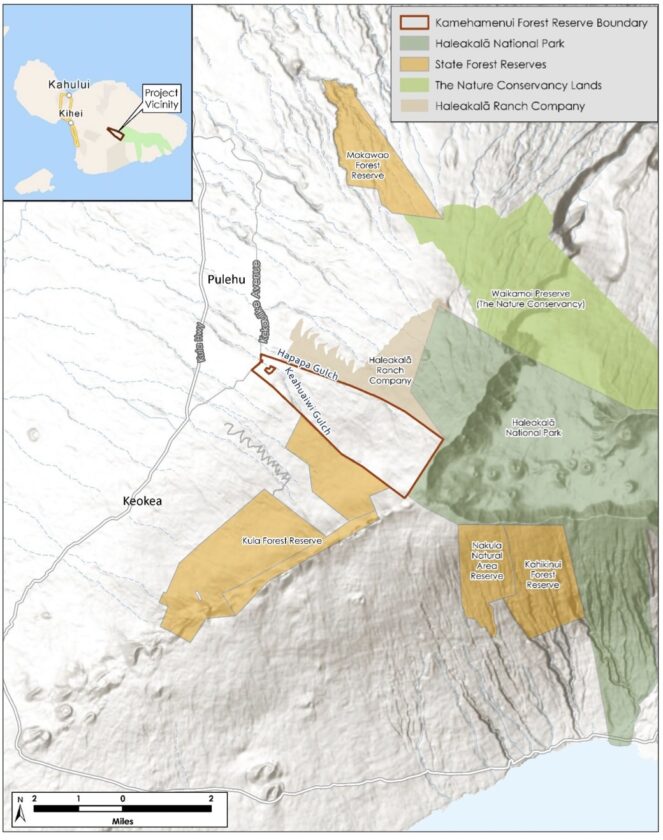Report on the Ecological Roles and Extinction of Pleistocene Giant Ground Sloths
Introduction: Reconstructing Past Ecosystems to Inform Future Sustainability
This report details a paleoecological study on two species of extinct giant ground sloths, Nothrotheriops shastensis (Shasta ground sloth) and Paramylodon harlani (Harlan’s ground sloth), from the La Brea Tar Pits in Southern California. The research reconstructs their dietary niches to understand their ecological functions and the consequences of their extinction approximately 13,700 years ago. The findings provide critical historical context for understanding biodiversity loss and its impact on ecosystem resilience, directly informing strategies related to the United Nations Sustainable Development Goal 15 (Life on Land), which seeks to protect, restore, and promote the sustainable use of terrestrial ecosystems and halt biodiversity loss.
Methodology for Dietary Reconstruction
Challenges in Analyzing Enamel-less Dentition
Standard paleoecological techniques for dietary analysis present significant challenges when applied to giant ground sloth fossils. The primary obstacles include:
- Absence of Enamel: Sloth teeth are composed primarily of dentin, a porous tissue that lacks the hard, inorganic enamel found on the teeth of most mammals.
- Postmortem Alteration: The organic-rich nature of dentin makes it susceptible to chemical changes during fossilization. This compromises the reliability of stable isotope analysis, a common method for determining diet based on the chemical signatures of food sources preserved in tissues.
Application of Dental Microwear Texture Analysis
To overcome these limitations, this study employed Dental Microwear Texture Analysis (DMTA). This technique analyzes microscopic wear patterns on tooth surfaces to infer the physical properties of an animal’s food. The methodology was validated through a preliminary study on modern xenarthrans (sloths, armadillos, anteaters), which confirmed that dentin microwear could reliably differentiate between diets. This rigorous scientific approach is essential for generating the accurate data needed to support evidence-based conservation policies aligned with SDG 15.
Analysis of Findings: Dietary Niches and Ecological Partitioning
Distinct Dietary Profiles of Coexisting Sloth Species
The DMTA results revealed significant dietary differences between the two co-occurring species, indicating they occupied distinct ecological niches and avoided direct competition.
- Paramylodon harlani (Harlan’s Ground Sloth): The dental microwear of this larger species was characterized by deep, pit-like textures. This pattern is consistent with a diet of hard or mechanically challenging foods, such as tubers, seeds, fungi, and fruit pits. Skeletal evidence suggesting powerful digging capabilities supports the conclusion that it foraged both above and below ground.
- Nothrotheriops shastensis (Shasta Ground Sloth): This species exhibited microwear patterns similar to modern herbivores that consume leaves and woody plants. This finding aligns with previous analyses of fossilized dung, which indicated a diet rich in desert plants like yucca, agave, and saltbush.
Comparison with Other Pleistocene Herbivores
Further analysis demonstrated that the dietary behaviors of both sloth species did not significantly overlap with other contemporary herbivores, such as camels, horses, and bison. This confirms that giant ground sloths performed unique ecological functions that were not replicated by other members of the faunal community.
Implications for Sustainable Development Goal 15: Life on Land
Megafauna as Critical Ecosystem Engineers
The study highlights the role of the Harlan’s ground sloth as a megafaunal “ecosystem engineer.” Its foraging and digging activities would have significantly influenced its environment by:
- Altering soil structure and promoting aeration.
- Enhancing nutrient cycling.
- Dispersing seeds and fungal spores over large distances.
The loss of such species represents a failure to protect key components of biodiversity, a central tenet of SDG 15. The extinction of these animals led to the disappearance of their unique ecological functions, impacting the health and structure of their habitats.
Legacy of Extinction and Modern Conservation Parallels
The extinction of giant ground sloths triggered cascading ecological changes that persist today. For example, the regional restriction of plants with “anachronistic” fruits, such as the Osage orange, is attributed to the loss of their megafaunal seed dispersers. This historical event serves as a stark reminder of the long-term consequences of biodiversity loss, directly relevant to SDG Target 15.5, which calls for urgent action to halt the loss of biodiversity.
Conclusion: Integrating Paleoecological Insights into Modern Conservation Strategy
The analysis of giant ground sloth diets provides more than a window into the past; it offers critical lessons for the present. The research demonstrates that the extinction of megafauna resulted in the loss of irreplaceable ecological functions, diminishing the overall resilience of the ecosystem. This underscores the urgent need to protect modern large herbivores, whose diverse roles are vital for maintaining functional ecosystems. Conserving these species is fundamental to achieving SDG 15 (Life on Land) and contributes to broader goals, including climate action (SDG 13), by ensuring ecosystems remain robust and capable of adapting to environmental change.
Analysis of Sustainable Development Goals in the Article
1. Which SDGs are addressed or connected to the issues highlighted in the article?
The primary Sustainable Development Goal (SDG) connected to the issues discussed in the article is:
-
SDG 15: Life on Land
This goal focuses on protecting, restoring, and promoting the sustainable use of terrestrial ecosystems, halting and reversing land degradation, and halting biodiversity loss. The article directly addresses this by examining the ecological consequences of the extinction of giant ground sloths, a significant event of biodiversity loss. It discusses how these animals were “critical ecosystem engineers” and how their disappearance led to “cascading ecological changes that continue to affect habitat resilience today.” The article concludes by linking this historical extinction to modern conservation, stating that “preserving today’s living large herbivores… is crucial for conserving functional ecosystems,” which is a core principle of SDG 15.
2. What specific targets under those SDGs can be identified based on the article’s content?
Based on the article’s focus on extinction, ecosystem roles, and biodiversity, the following specific targets under SDG 15 are relevant:
-
Target 15.1: By 2020, ensure the conservation, restoration and sustainable use of terrestrial and inland freshwater ecosystems and their services…
- Explanation: The article highlights the ecosystem services provided by giant ground sloths. The Harlan’s ground sloth, for example, “excavated soil and foraged underground, thereby affecting soil structure and nutrient cycling, even dispersing seed and fungal spores over wide areas.” The loss of these animals resulted in the loss of these services, demonstrating the importance of conserving species to maintain functional ecosystems, as outlined in this target.
-
Target 15.5: Take urgent and significant action to reduce the degradation of natural habitats, halt the loss of biodiversity and, by 2020, protect and prevent the extinction of threatened species.
- Explanation: The article is a case study on the consequences of failing to meet this target. It details the “extinction in Southern California 13,700 years ago” of two megafauna species. The entire analysis of their lost ecological roles serves as a powerful argument for the urgency of preventing modern extinctions to avoid similar negative impacts on today’s ecosystems.
-
Target 15.9: By 2020, integrate ecosystem and biodiversity values into national and local planning, development processes, poverty reduction strategies and accounts.
- Explanation: The research described in the article is an example of work that establishes the value of biodiversity. By reconstructing the distinct diets and “complementary ecological roles” of the two sloth species, the study demonstrates their unique and irreplaceable value to the ecosystem. This type of scientific understanding is a prerequisite for integrating biodiversity values into conservation planning.
3. Are there any indicators mentioned or implied in the article that can be used to measure progress towards the identified targets?
The article, being a scientific study of past events, does not use official UN indicators but implies several metrics that can be used to measure ecosystem health and biodiversity loss, which are relevant to the identified targets.
-
Rate of species extinction:
- Explanation: The article explicitly mentions the “extinction in Southern California 13,700 years ago” of the Shasta and Harlan’s ground sloths. The study of past extinctions provides a baseline and context for measuring current rates of biodiversity loss, a key concern of Target 15.5.
-
Presence and function of ecosystem engineers:
- Explanation: The article identifies the Harlan’s ground sloth as a “megafaunal ecosystem engineer” and describes its functions, such as affecting “soil structure and nutrient cycling.” The presence or absence of such key species and the continuation of their functions can serve as an indicator of ecosystem health and integrity, relevant to Target 15.1.
-
Distribution of dependent plant species:
- Explanation: The article notes that the extinction of megafauna like giant ground sloths “contributed to the regional restriction of these plants [like the Osage orange], since no one was around to spread their seeds.” The geographic range and population health of plants that rely on animal dispersal can be an indicator of the health of the broader ecosystem and the effectiveness of its seed-dispersing fauna.
-
Understanding of ecological niches:
- Explanation: The study itself, using “dental microwear texture analysis” to determine that the sloths “partitioned their niches and played complementary ecological roles,” represents an indicator of scientific effort to understand and value biodiversity. The depth of this knowledge is crucial for effective conservation planning, as mentioned in Target 15.9.
4. Summary of SDGs, Targets, and Indicators
| SDGs | Targets | Indicators (Implied in the Article) |
|---|---|---|
| SDG 15: Life on Land | 15.1: Ensure the conservation and sustainable use of terrestrial ecosystems and their services. |
|
| 15.5: Halt the loss of biodiversity and prevent the extinction of threatened species. |
|
|
| 15.9: Integrate ecosystem and biodiversity values into planning. |
|
Source: theconversation.com






